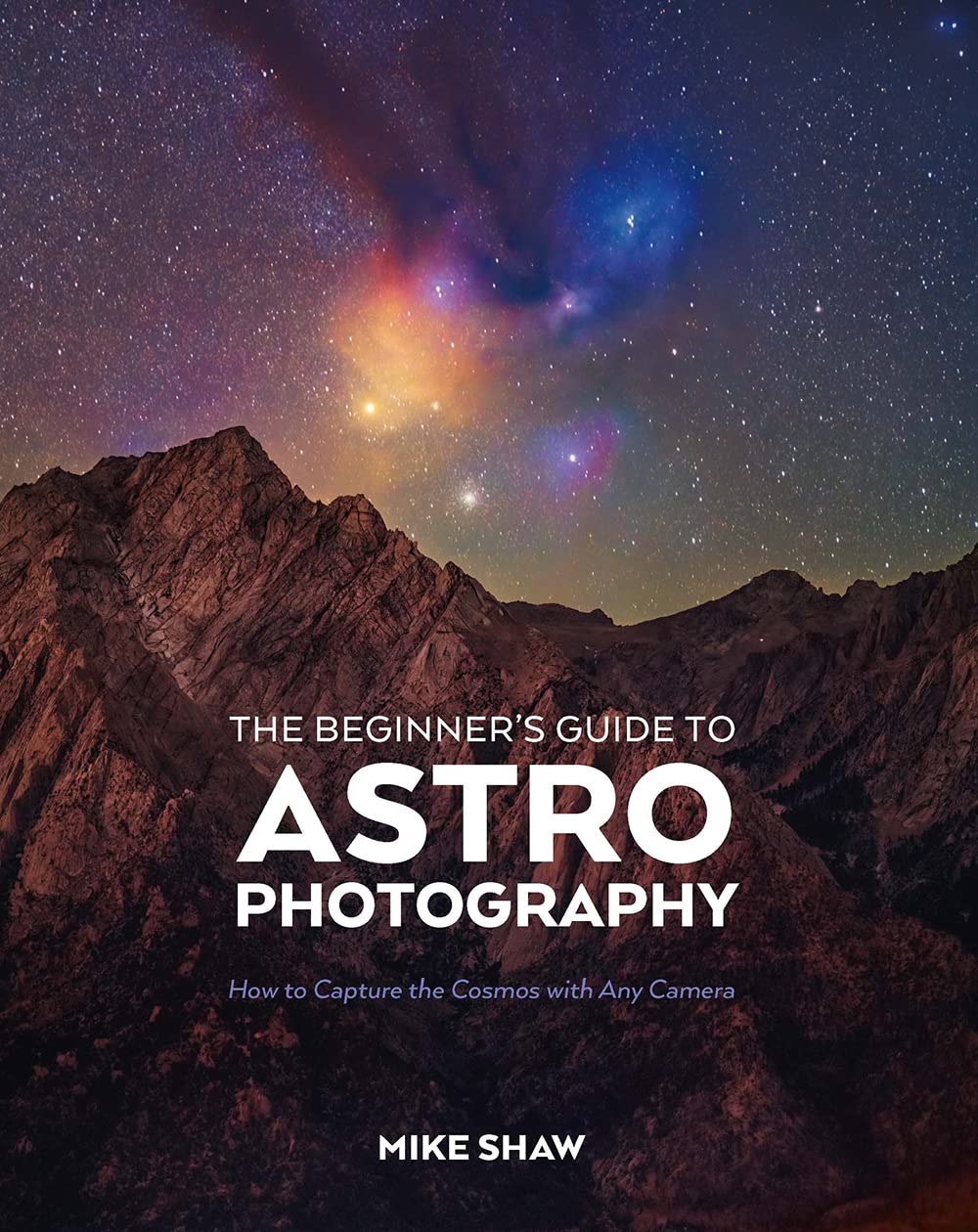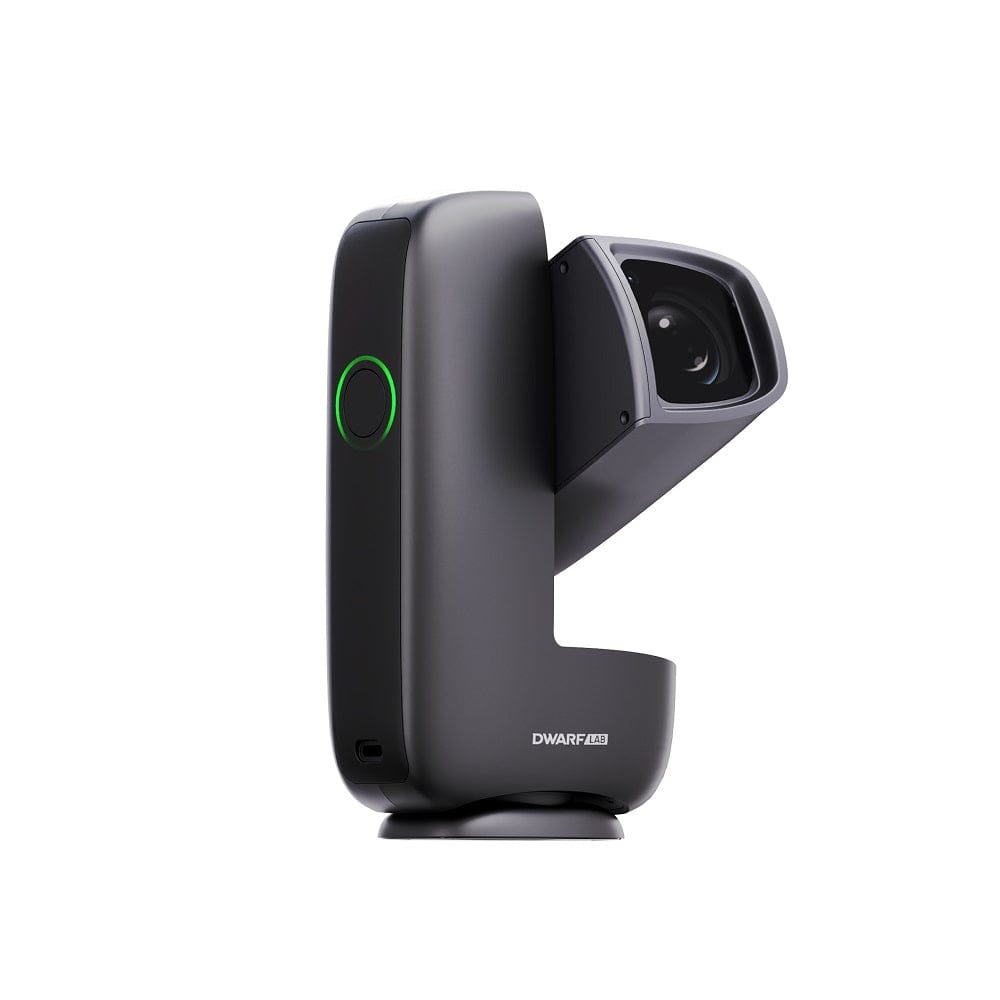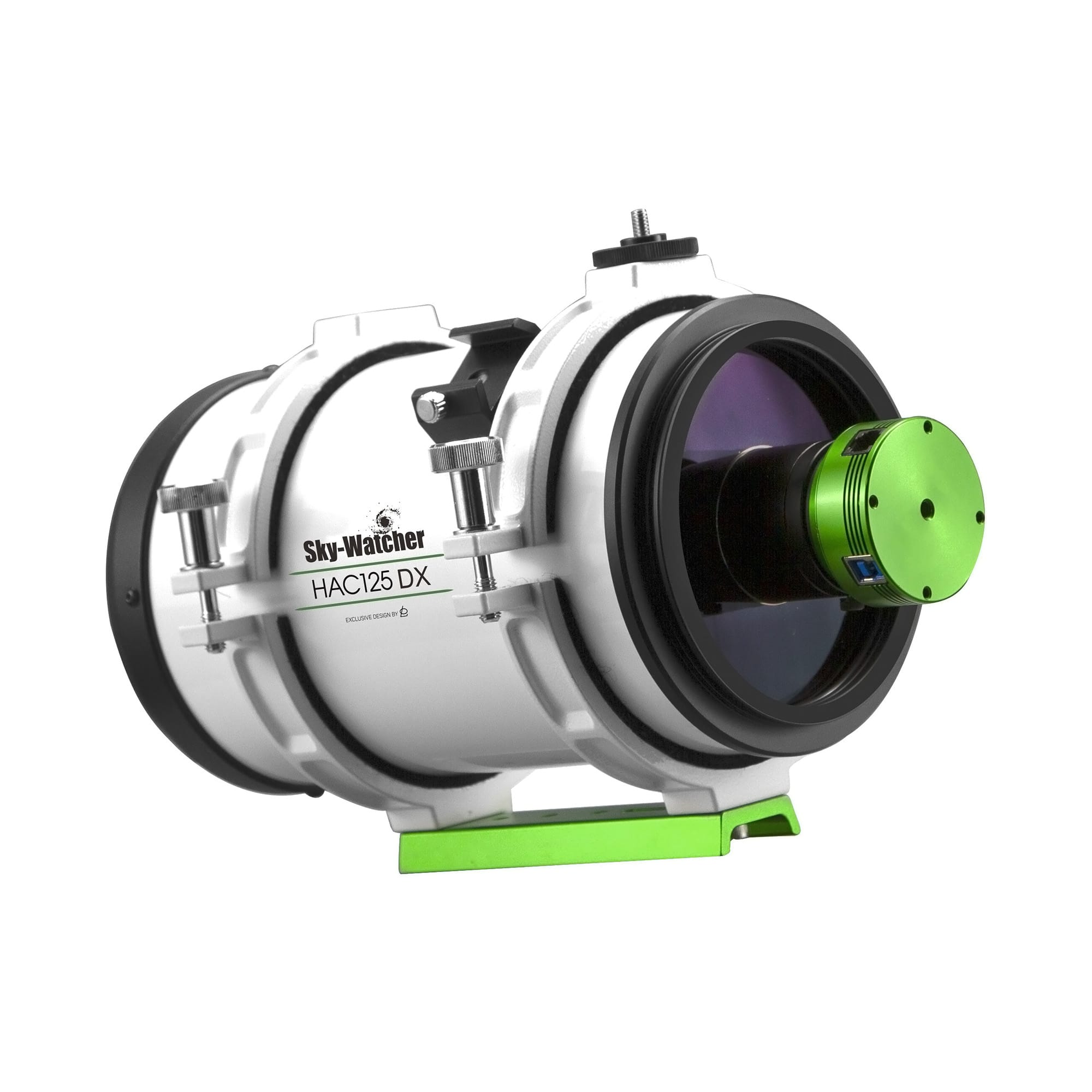Mike Shaw’s The Beginner’s Guide to Astrophotography sets out to demystify the night sky for newcomers, and it does so with clarity, technical rigour, and just enough inspiration to keep readers turning pages. Subtitled “How to Capture the Cosmos with Any Camera,” this 2023 book still remains relevant in 2025.
Quick Overview
- Truly beginner-friendly: Assumes little to no prior knowledge and explains technical concepts clearly.
- Covers all gear tiers: Includes practical advice whether you’re using a smartphone, DSLR, or telescope.
- Structured for progression: Follows a logical learning path from sky understanding to post-processing.
- Extensive sectioning: Each type of astrophotography (landscape, deep-sky, eclipse, comet) is covered individually.
- Highly visual: Image-rich layout with annotated figures enhances learning and inspiration.
Introduction and Who It’s For
This book is squarely aimed at those starting out in astrophotography, but it doesn’t shy away from venturing into intermediate ground. Shaw’s writing style is conversational yet accurate. The early chapters make no assumptions about the reader’s prior knowledge, beginning with “What is Astrophotography?” before leading readers into the mechanics of celestial movement, camera settings, and session planning.
Beginners will appreciate the friendly tone and structured guidance, while more experienced readers will still find gems scattered throughout—particularly in the technical breakdowns and equipment setup tips.
Structure and Content Breakdown
1. Understanding the Sky
The book opens with an accessible primer on the celestial sphere, right ascension and declination, and how sky movement changes throughout the night and year. Shaw uses analogies and diagrams effectively here, making coordinate systems and planisphere usage understandable even to readers unfamiliar with astronomy.
2. Equipment, Setup & Technique
This chapter is a standout. Rather than overwhelming readers with gear lists, it categorises equipment by usage tier: smartphones, entry-level DSLRs, and mirrorless systems. Focal lengths are tied directly to astrophotography subjects (e.g., 14mm for Milky Way, 200mm for nebulae), and lens selection is illustrated with real examples.
The advice on tripods, focusing, and settings selection is notably pragmatic—particularly the section on choosing exposure settings based on local Bortle scale conditions, with test images from urban, suburban, and dark-sky locations for comparison.
[Insert an image showing side-by-side Bortle scale sky examples, as discussed in Figure 3.17.]
3. Astrophotography Types: Landscape vs. Deep Sky
Shaw dedicates full chapters to each major type:
- Landscape Astrophotography (Chapter 4): Emphasises single exposures, composites, and nightscape composition.
- Deep-Sky Astrophotography (Chapter 5): Introduces star trackers, filters, and framing for nebulae, clusters, and galaxies.
Both are presented with actionable examples, including recommended lenses and filters. There’s enough detail to try both disciplines, with the flexibility to specialise later.
4. Session Planning and Troubleshooting
Chapters on planning (Chapter 6) and running your first session (Chapter 7) offer realistic advice: expect things to go wrong and learn from it. The inclusion of templates for night photography planning is especially helpful for beginners building a workflow.
5. Post-Processing Workflow
Chapter 8 delves into Lightroom, Photoshop, PixInsight, and stacking software. This is one of the more advanced sections, yet it remains approachable by focusing on purpose and results rather than overwhelming with software minutiae.
Readers are encouraged to experiment with different editing stages (e.g., “global vs. local adjustments”) with the understanding that there’s no single “correct” method—only what works best for the image and the photographer’s goal.
Strengths and Limitations
Strengths
- Covers both theory and practice: Night sky science is given context, not just gear talk.
- Progressive learning curve: Ideal for those starting from scratch or transitioning from landscape photography.
- Visual aids throughout: Diagrams, example images, and tables enhance understanding and inspiration.
- Focus on accessibility: Emphasises that great images are possible with even modest equipment.
Limitations
- Not brand-specific: Readers looking for in-depth product comparisons or specific gear setups (e.g., ZWO vs QHY) won’t find them here.
- Post-processing light on depth: While editing is covered well for beginners, those seeking advanced PixInsight workflows will need supplementary material.
- No discussion of monochrome cameras, filters, or dedicated astronomy cameras: The book primarily assumes use of DSLRs or smartphones, though trackers are briefly covered.
Where to purchase

Mike Shaw’s Beginner’s Guide to Astrophotography is available as both a paperback and e-reader through Amazon. For beginners this book at £30/£14.99 on Kindle (with the paperback often on sale for £20) provides great insight into getting started with astrophotography.
Final Thoughts
The Beginner’s Guide to Astrophotography is an excellent entry point for anyone curious about photographing the night sky. It manages to be both technically informative and broadly encouraging, which is no small feat. By focusing on doing more with what you already own, Shaw removes the gear anxiety that often plagues newcomers and instead instils a sense of possibility.
For readers just starting their astrophotography journey—or those ready to move beyond “auto mode”—this guide will be a worthwhile investment. If you’re looking for a gear-buying guide or advanced image processing techniques, you’ll need additional resources. But as a foundational textbook, it excels.
Recommended for: Beginners with DSLR/mirrorless cameras, smartphone users wanting to level up, and anyone curious about both the sky and the photographic process behind capturing it.
Looking for imaging with a mobile phone? Samsung and iPhone users can follow this guide to get started with mobile phone astrophotography!



